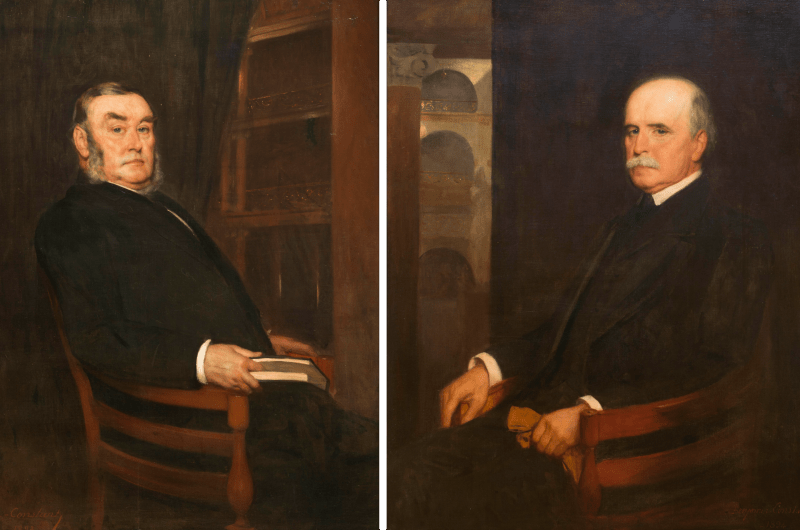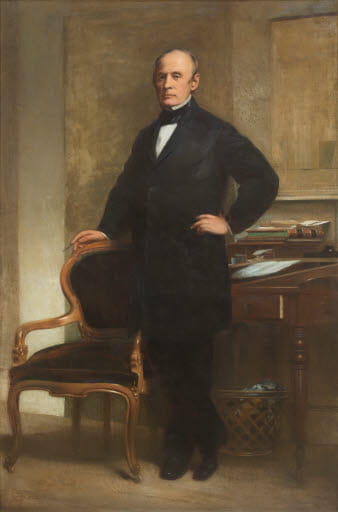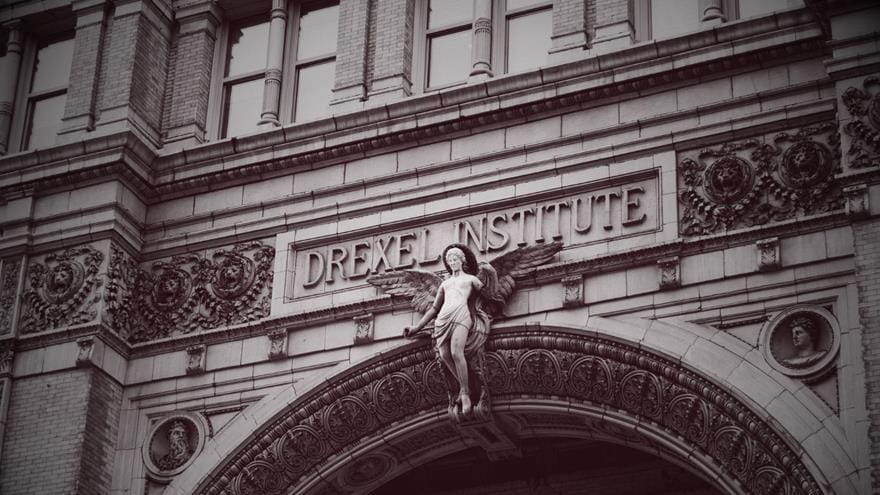Hidden Treasures: The Drexel Paintings That Have Gone ‘Down to Posterity’

Though banker and philanthropist Anthony “Tony” J. Drexel gave his name to what is now Drexel University, the man was extremely private. How private, exactly? When the Drexel Institute of Art, Science and Industry requested a portrait of its founder in 1892, Tony refused until his lifelong best friend and business partner, George W. Childs, eventually persuaded him. He only agreed as long as Childs was also painted, the school didn’t pay the $5,000 fee and the painting couldn’t be hung at the Drexel Institute of Art, Science and Industry until after his death. Ever the businessman, Tony got what he wanted.
“Mr. Drexel was a man of singular modesty; one who feared and shunned praise more than blame,” Childs later recounted in a memorial article written for Tony. “He was, indeed, one of the most retiring and modest men I ever knew.”
It was so rare for Tony to agree to have his likeness painted that the Drexel family as well as the Drexel family bank, Drexel & Co., requested their own copies. One year later, in 1894, the artist, Jean-Joseph Benjamin Constant, finished those paintings.
Tony must have made a good connection with Constant, who was well known in his day but has been largely forgotten in modern times. Constant had made a name for himself in his native France and later North America from his Orientalist paintings as well as his portrait work, having painted Queen Victoria, Pope Leo XIII and Edward, Prince of Wales.
In addition to painting Tony (and then painting him twice more), Constant also painted Childs and is believed to have done a posthumous portrait of Tony’s father, Francis Martin. Luckily, Drexel has all five paintings in its possession today.

The oil on canvas paintings of Childs and Tony act as mirror images of each other — the friends of more than 40 years even sat on the same chair for their respective paintings. In “Portrait of George W. Childs (1829–1894),” Childs is depicted sitting in the building that housed the Public Ledger newspaper he co-owned with Tony. In “Portrait of Anthony J. Drexel (1826–1893),” Tony is shown in Main Building at Drexel, which Tony founded on the advice of Childs and to which Childs, who took over as president of the Board of Trustees after Tony’s death, later bequeathed his vast collection of art and manuscripts.
“After M. Constant had finished the sketching of his fine face, Mr. Drexel arose and insisted upon my sitting,” Childs later recounted, “and afterward said to me, ‘You have insisted upon my sitting, now you must do as I have done; for, as we have been together in life, you shall go down to posterity with me through M. Constant’s genius.’”
Tony died of a heart attack on June 30, 1893, before the original portrait was actually finished. Childs died — some say of a broken heart — seven months later. Since then, their portraits have hung at Drexel side by side, first in the Picture Gallery and now in their current locations in the boardroom of the Paul Peck Alumni Center. The paintings have even been restored and rehabilitated at the same time over the years. Sure enough, Tony’s stipulations and comment to Childs came true after all.
“Portrait of Francis Martin Drexel (1792–1863),” the full-length portrait of Francis Martin, is currently hung between Childs and Tony. Constant is thought to have painted it sometime in the 19th century — no signature or date is available, as in the others — and shows Francis Martin in typical 1860s dress. The painting was supposedly produced from a carte de visite, a then-popular photograph and visiting card distributed to friends and visitors. That painting and a copy of Tony’s painting were donated to Drexel in 1955 by Drexel & Co.
The copies of Tony’s painting can be found in the President’s Office in Main Building and in The Drexel Collection’s current exhibition, The Drexel Collection: Celebrating 125 Years, in the Rincliffe Gallery.
This article originally appeared in the fall issue of Drexel Quarterly.In This Article
Drexel News is produced by
University Marketing and Communications.

